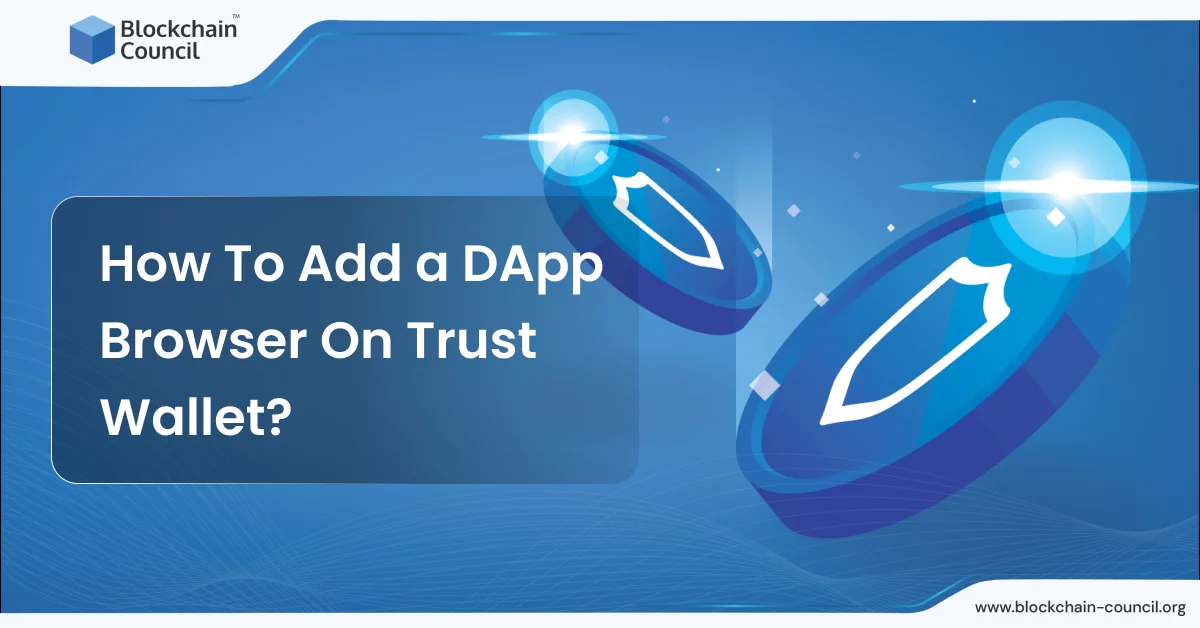If you’re navigating the world of decentralized finance (DeFi) and cryptocurrencies, having a reliable DApp (Decentralized Application) browser is essential. Trust Wallet, a popular mobile wallet for managing digital assets, offers a seamless experience for users keen on exploring decentralized applications.
In this article, we’ll guide you through the straightforward process of how to add a DApp browser to Trust Wallet. Whether you’re a seasoned crypto enthusiast or a newcomer, this step-by-step guide will help you unlock the full potential of Trust Wallet’s capabilities.
What is a DApp Browser?
A DApp browser, short for Decentralized Application browser, is a unique web browser designed specifically for interacting with decentralized applications (DApps) that operate on blockchain technology. Unlike conventional web browsers that connect users to centralized websites, DApp browsers facilitate access to a diverse array of applications functioning on a distributed network of computers.
In essence, these DApps leverage the decentralized nature of blockchain technology. In this secure and transparent system, data is stored across a network of computers rather than on a single centralized server. This decentralized approach enhances security, transparency, and immutability compared to traditional, centralized systems.
One significant characteristic of DApp browsers is their compatibility with various domains of decentralized applications. These applications span multiple sectors, including decentralized finance (DeFi), online gaming, social media, etc. Each of these applications operates within a blockchain framework, ensuring a level of trust and security inherent to decentralized systems.
In practical terms, when users interact with a DApp through the specialized browser, they engage with a decentralized network of nodes that collectively validate and secure transactions. This contrasts centralized applications, where a single entity typically manages and oversees the entire process. The decentralized approach enhances security and eliminates the need for intermediaries, reducing the potential for censorship or manipulation.
Furthermore, DApp browsers often incorporate features that allow users to seamlessly manage their blockchain-based assets, such as cryptocurrencies, within the browser interface. This integration streamlines the user experience and fosters a more user-friendly environment for individuals navigating the decentralized landscape.
What is a Trust Wallet?
Trust Wallet is a cryptocurrency wallet that stands out for its focus on simplicity, security, and decentralized features. One unique aspect is its origin as an open-source project initiated by Viktor Radchenko in 2017. It gained prominence for being one of the first mobile wallets designed exclusively for decentralized applications (DApps) on the Ethereum blockchain.
From a technical perspective, Trust Wallet is a non-custodial wallet that doesn’t hold onto users’ private keys or funds. Instead, it operates on the principle of client-side encryption, where the private keys are stored locally on the user’s device. This enhances security by reducing the exposure of sensitive information to potential online threats.
Moreover, Trust Wallet has evolved beyond its Ethereum-centric origins. It now supports a wide range of blockchain networks, including Binance Smart Chain, which enables users to interact with decentralized applications and store various cryptocurrencies. The wallet’s ability to connect to multiple blockchains is made possible through Hierarchical Deterministic (HD) wallet technology, allowing users to manage multiple crypto assets using a single seed phrase.
Trust Wallet also integrates with decentralized exchanges (DEXs), enabling users to trade cryptocurrencies directly within the app. This involves interacting with smart contracts on the respective blockchains, showcasing the wallet’s commitment to providing a decentralized and censorship-resistant trading experience.
Regarding user privacy, Trust Wallet employs address-book encryption and metadata obfuscation to enhance confidentiality. Additionally, it supports the use of privacy-focused cryptocurrencies and implements features like Tor network integration for enhanced anonymity during transactions.

